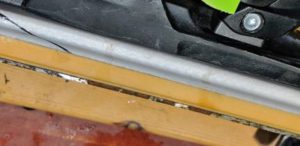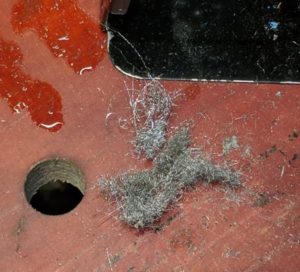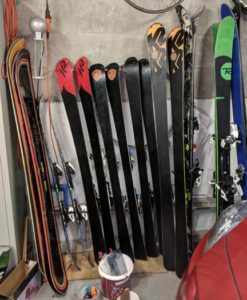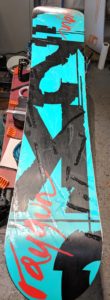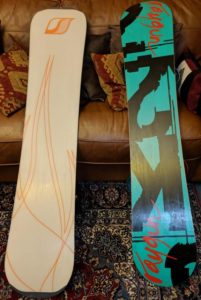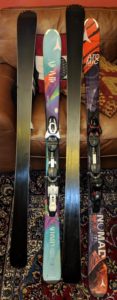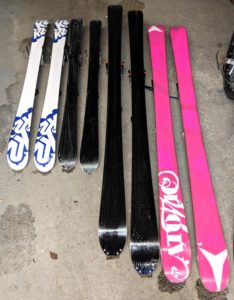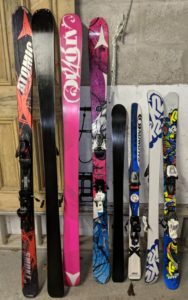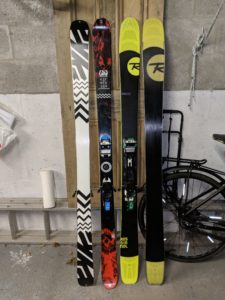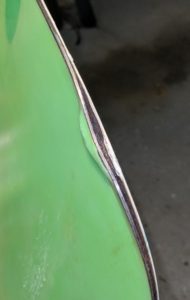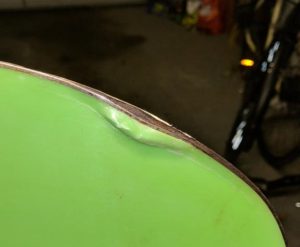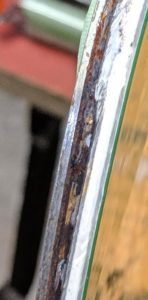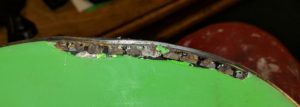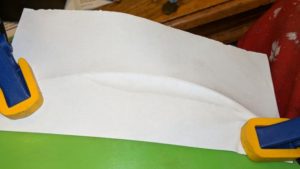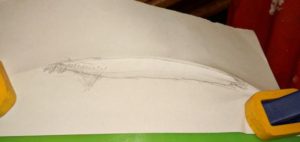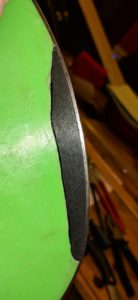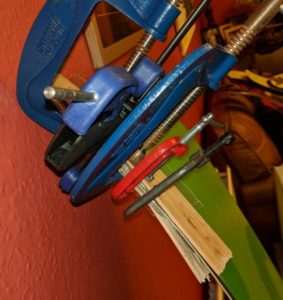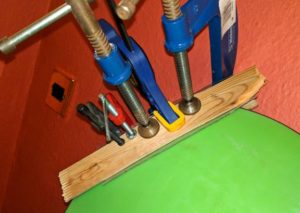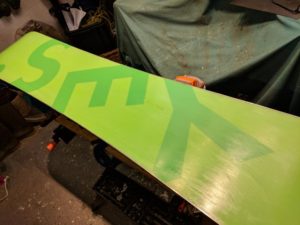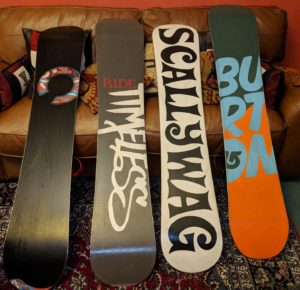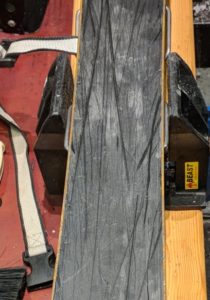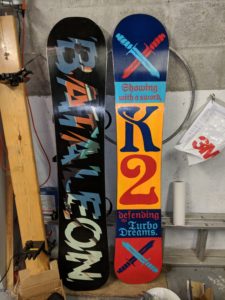Colin was my first customer and has probably been the most loyal with various sets of skis coming through the shop and plenty of recommendations to his mates.
One thing I really like about Colin is that fact that, despite spending the sort of money on skis and bindings that could buy you a flat in Torry, he’s not frightened to ski the nuts off his kit. Naturally that leads to a few minor dings:
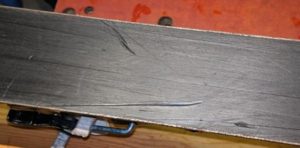
But fear not, DPS know a thing or two about skis and use rufty-tutfy P-tex, probably 7200 or higher, if it exists. So while that means the repair P-tex takes a while to weld in, it also means it’s staying there for good. You just need to remember that there isn’t really anywhere for excess heat to go on these super lightweight carbon fibre skis so be vigilant.

DPS are the only people I know who hand-tune skis at the factory, which makes tuning them an absolute breeze. Like most manufacturers they’ve parted company with stainless edges, so even if the edges are worse for wear you can get them back in shape fairly easily without wearing out all your files. They even cut back the sidewall polythene above the steel edges so that your overworked local tech doesn’t need to do it himself.
It goes without saying that the bases are perfectly flat and, despite the very thin skis there’s no “pull through” of binding screws. Unlike half the snowboards I see that have “wax wells” under the bindings…
So it’s the same old story – you can have as much fun on your Decathlon skis as Colin has on his DPSs – they’re only a bit heavier, and a bit softer, and a bit more flexi – but you won’t have the feeling of innate superiority as you pile out of the chopper into the unknown…

